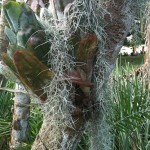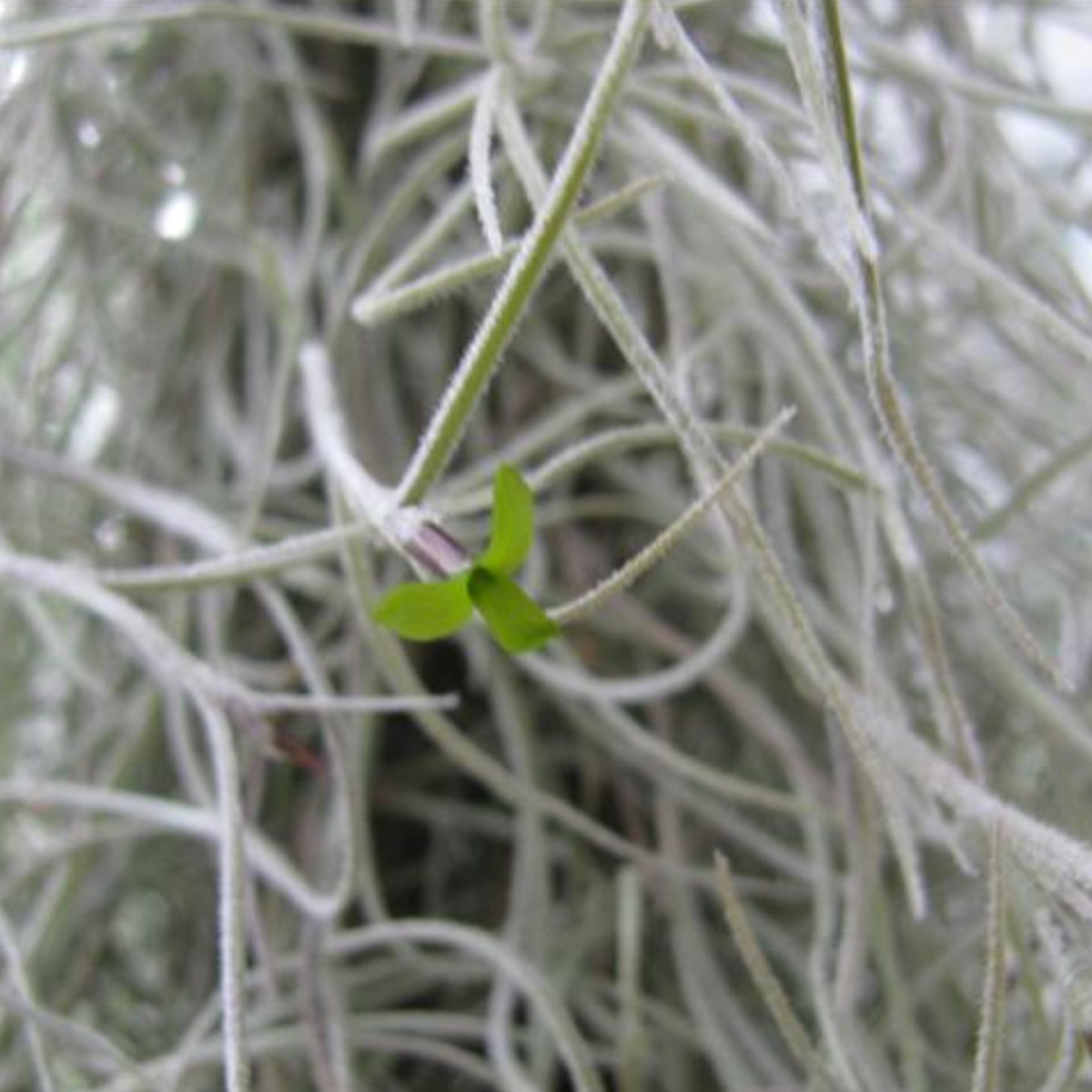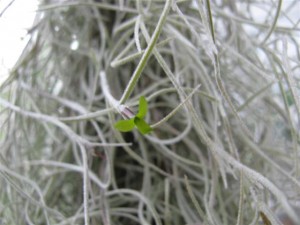Family: Bromeliaceae
Distribution and habitat: Tillandsia usneoides is a flowering plant that grows upon larger trees, commonly the Southern Live Oak (Quercus virginiana) or Bald Cypress (Taxodium distichum) in the south-eastern United States. It grows hanging from tree branches in full sun or partial shade. Its natural range is from Virginia Beach, Virginia in the south-eastern United States to Argentina, growing wherever the climate is warm enough and has a relatively high average humidity. It has been introduced to similar locations around the world, including Hawaii and Australia.
While it rarely kills the trees, it lowers their growth rate by reducing the amount of light to a tree's own leaves. It also increases wind resistance, which canbe fatal to the host tree in a hurricane. In the southern United States, the plant seems to show a preference of growth on Southern Live Oak (Quercus virginiana) or Bald Cypress (Taxodium distichum) because of these trees' high rates of foliar mineral leaching (calcium, magnesium, potassium, and phosphorus) providing an abundant supply of nutrients to the plant, but it can also colonize other tree species such as Sweetgum (Liquidambar styraciflua), crepe-myrtles (Lagerstroemia spp.), other oaks and even pines.
Description:Tillandsia usneoidesis an epiphyte which absorbs nutrients (especially calcium) and water from the air and rainfall.
The plant consists of a slender stem bearing alternate thin, curved or curly, heavily scaled leaves 26cm (0.792.4 inch) long and 1mm (0.039 inch) broad, that grow vegetatively in chain-like fashion (pendant) to form hanging structures up to 6m (240 inch) in length. The tread-like stems covered with grey scales are in reality, minute, scaly leaves. The plant has no aerial roots and its flowers are tiny and inconspicuous. The tiny, pale green flowers that appears in the leaf axil of wild Tillandsia usneoides, rarely bloom on plants grown indoors. The flowers, with a musk fragrance, appear in the warmer months.
Proper care:
Light: Tillandsia usneoides used as house plants do best in bright filtered light (a translucent blind is a useful filter).
Temperature: Tillandsia usneoides will grow actively through the year if the temperature in kept above 15C (59F); they cannot tolerate temperature below 13C (55F).
Mist-spray Tillandsia usneoides daily.
Watering: Watering is essential for good growth, a soaking every day or two in summer and fortnightly in winter will keep the plant at peak condition. Submerge the plant along with its base in water for 10 minutes.
Avoid hot or dry environments and full sunlight unless sprinkler systems are installed or regular watering is available. Tillandsia usneoides will tolerate full sun in moister climates; in arid climates it must be sheltered.
Fertilising: Occasional fertiliser in water will speed up the growth.
Potting and repotting: Tillandsia usneoides is not actually use as a potted plant being rootless.
Propagation: Wild Tillandsia usneoides propagates both by seed and vegetatively by fragments that blow on the wind and stick to tree limbs, or are carried by birds as nesting material.
To propagate Tillandsia usneoides detach a few stems and wire them to a piece of cork or bark.
Problems: Tillandsia usneoides does not suffer from diseases or pests other that birds can use the plant as nesting material in spring.
Uses: In the wild this unusual, virtually rootless plant hangs from trees and rocks in long, tangled festoons. Tillandsia usneoides for this reason is not actually use as a potted plant. Instead, many indoor gardeners attach a few sections of the tangled mass to a 5cm (2 inch)square piece of cork or bark, tying the fine stem on loosely with plastic coated or copper wire and hanging the cork on a hook.
It can also be trained around garden decorations and it looks pretty growing on the branches of a silver birch tree. It can also be used to accompany other bromeliads or epiphytic orchids grown on a tree fern or in tree branches.
SUMMARY:
CHARACTERISTICS:
Foliage green
Shape Trailing
Height: 6m (240 inch)
PROPER CARE:
Watering in rest period moderately
Watering in active growth period moderately
Light bright filtered
Temperature in rest period min 13C max 16C (55-61F)
Temperature in active growth period min 16C max 24C (61-75F)
Humidity high
Hardiness zone: 7a-11




